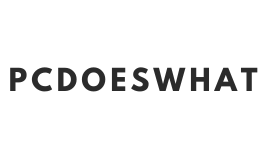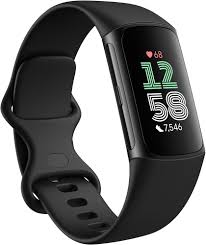Deciding whether to switch from a Fitbit Charge 6 to a Whoop depends on your fitness goals, tracking needs, and what specific features you value in a health and fitness wearable. Both devices cater to different types of users, and each has strengths in various areas. Let’s break down the differences to help you make an informed decision.
1. Primary Purpose
- Fitbit Charge 6: Fitbit devices are designed for general health monitoring and fitness tracking. They offer a broad spectrum of features, including heart rate monitoring, sleep tracking, GPS, step counting, and exercise logging. Fitbit also includes smartwatch capabilities like notifications, music controls, and stress management tools.
- Whoop: The Whoop strap is a dedicated fitness and recovery tracker that focuses heavily on optimizing performance through strain, recovery, and sleep analysis. It doesn’t have a screen, apps, or notifications like Fitbit, and its focus is more on athletes or serious fitness enthusiasts who want to optimize performance and recovery rather than just tracking activity.
2. Fitness Tracking & Accuracy
- Fitbit Charge 6: Fitbit tracks a variety of metrics like heart rate, calories burned, and steps. With the Charge 6, you also get features like built-in GPS, SpO2 monitoring, ECG, and cardio fitness score. It’s great for all-around health tracking and daily activity logging, including casual workouts like walking, running, swimming, or gym sessions.
- Whoop: Whoop shines in tracking heart rate variability (HRV), resting heart rate (RHR), and sleep data to calculate your overall recovery score. It’s hyper-focused on measuring strain from workouts and calculating how well you’ve recovered, using data to recommend whether you should rest or push hard. Its HR accuracy is highly praised for endurance athletes or those who train intensively.
Verdict: If you need a fitness tracker for general fitness, step counting, and everyday health monitoring, the Fitbit Charge 6 is likely sufficient. If you’re more interested in precision tracking for workouts and recovery, especially for high-performance training, Whoop excels in this area.
3. Sleep Tracking
- Fitbit Charge 6: Fitbit’s sleep tracking is quite advanced. It monitors sleep stages (light, deep, REM), tracks restlessness, and gives you a sleep score based on overall sleep quality. It also integrates this data into its stress management and wellness insights.
- Whoop: Whoop is known for its advanced sleep analytics. It tracks sleep in great detail, including stages, disturbances, respiratory rate, and time spent in each sleep stage. Most importantly, Whoop’s focus is on how well you’ve recovered overnight and whether you’re ready for another strenuous workout. It provides a recovery scorebased on your sleep data and HRV.
Verdict: Fitbit’s sleep tracking is solid for general users, but if you’re looking for in-depth recovery data that directly influences your workout planning, Whoop’s sleep tracking is superior.
No products found.
No products found.
4. Recovery Focus
- Fitbit Charge 6: Fitbit helps with recovery mainly through tracking sleep quality and general wellness metrics, like heart rate, activity levels, and stress. However, it does not provide an integrated recovery score or recommend specific recovery actions based on workouts.
- Whoop: Whoop is all about recovery optimization. It generates a recovery score daily, based on HRV, resting heart rate, and sleep performance. Whoop advises on how hard you should train each day, offering insights into whether your body is fully recovered and ready for exertion, or whether you should take it easy.
Verdict: If recovery plays a key role in your fitness regime—especially for athletes, bodybuilders, or those pushing their limits regularly—Whoop provides more actionable and precise recovery insights.
5. User Interface & Usability
- Fitbit Charge 6: The Charge 6 has a touchscreen display, which makes it easy to navigate and check metrics like steps, heart rate, or notifications directly on the device. It also syncs with the Fitbit app, which is very user-friendly and provides a dashboard with detailed insights. You can view notifications, control music, and even use contactless payments.
- Whoop: The Whoop doesn’t have a screen, meaning you won’t get on-device notifications or quick access to data. You need to check everything through the Whoop app, which focuses on recovery, strain, and sleep insights. This minimalism works well for those who don’t want distractions, but if you like having information on your wrist, it could be limiting.
Verdict: Fitbit is better if you prefer having a display to check metrics at a glance or use smartwatch-like features. Whoop’s no-screen design appeals to users who want a distraction-free, focused fitness tracker.
6. Subscription Models
- Fitbit Charge 6: Fitbit comes with premium features that require a subscription (Fitbit Premium), but most of its core features are accessible without one. The subscription unlocks advanced sleep and health metrics, workout plans, and deeper analysis.
- Whoop: Whoop operates on a subscription-only model. You pay a monthly or yearly fee to access all the data and insights. There’s no option to buy the device outright without subscribing, making it a long-term financial commitment.
Verdict: If you prefer not being locked into a subscription model, the Fitbit Charge 6 offers more flexibility. Whoop’s subscription is more justifiable for users who want continuous, in-depth health analytics but it’s more expensive in the long run.
7. Battery Life
- Fitbit Charge 6: The battery life is generally good, lasting up to 7 days depending on usage, especially if you’re using GPS or advanced health tracking.
- Whoop: Whoop also has an impressive battery life of 5-6 days, and the charging mechanism allows you to wear the device while charging with an attachable battery pack.
Verdict: Both have good battery life, but if charging convenience matters, Whoop’s ability to be charged while worn is an advantage.
8. Community and Ecosystem
- Fitbit Charge 6: Fitbit offers a broader ecosystem that connects with other devices and apps like Google Fit, Apple Health, Strava, etc. It also has a large community of users, social challenges, and goal-setting options.
- Whoop: Whoop’s ecosystem is more performance-focused, with features like team tracking for athletes or fitness groups. It’s great if you’re looking to join a community of people focused on optimizing performance and recovery.
Verdict: If you’re more into general fitness and community features, Fitbit has a stronger, more diverse ecosystem. Whoop’s community is better suited for athletes and performance-driven individuals.
Conclusion: Should You Buy a Whoop?
- Choose the Fitbit Charge 6 if you want:
- A multi-functional fitness tracker with smartwatch features.
- Access to a range of health tracking like steps, sleep, heart rate, and general wellness.
- A display for quick access to notifications, fitness stats, and navigation.
- Flexibility with subscription, especially if you don’t want to be locked into a long-term financial commitment.
- More casual fitness tracking with built-in features for a well-rounded health overview.
- Choose the Whoop if you are:
- A serious athlete or fitness enthusiast looking for precision recovery tracking and workout optimization.
- Focused on performance and recovery data (like HRV and sleep stages) to guide your training regimen.
- Not concerned about having a screen or traditional smartwatch features, and prefer a minimalist, data-driven approach.
- Willing to invest in a subscription for continuous, in-depth analytics that go beyond simple activity tracking.
Ultimately, if you’re aiming to optimize high-performance training and recovery, Whoop could be a valuable upgrade. However, for most users looking for all-around fitness tracking and versatility, the Fitbit Charge 6 remains a powerful and feature-rich device.




